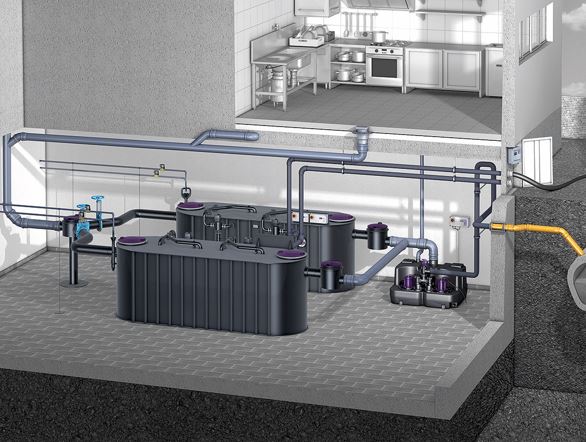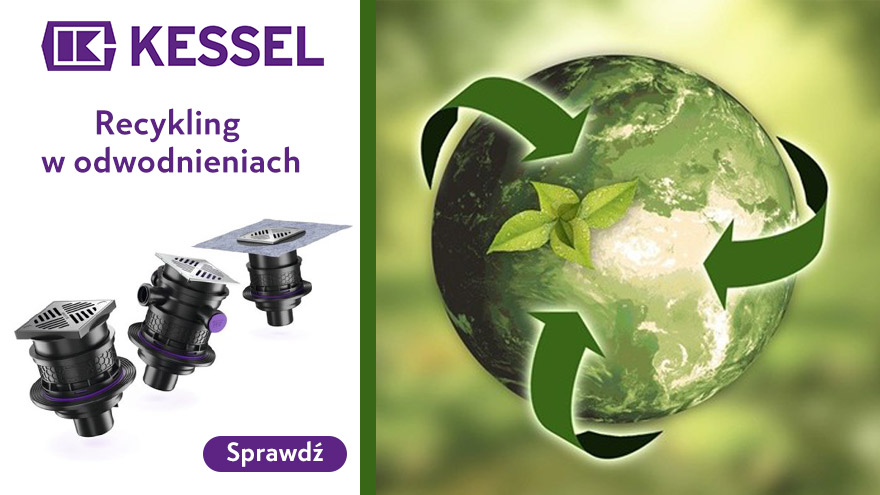The idea of recycling has been popular for many years. In our everyday lives, we contribute to it, for example by sorting garbage. Entrepreneurs from the drainage industry use recycling in a double sense - they create new products from recovered materials and develop gray water recycling technologies.
Recycling – what it is, how it works
Excessive consumption and exploitation of natural resources has led to a drastic reduction in their quantity, and sometimes even shortages. This resulted in sharp price increases and, above all, had an impact on the environment - the current scale of exploitation of natural resources is one of the causes of climate change. In the face of their decreasing quantity, it has become necessary to reduce consumption and develop methods of reusing materials that are suitable for reprocessing.
Check out Kessel drainage in the Onninen offer
Due to the decreasing amount of natural resources, companies pay more attention to the issue of recycling. A good example is the innovative Ecoguss material developed by Kessel. Plastics or cast iron are most often used to create gullies or pumping stations. Both raw materials are characterized by high durability and are resistant to the effects of chemical compounds contained in sewage. Plastics are also characterized by low weight and ease of processing. However, not all of them are recyclable.
To reduce the growth of waste and make maximum use of available raw materials, the company created Ecoguss - a composite material combining the advantages of plastic and cast iron.
Due to the decreasing amount of natural resources, companies pay more attention to the issue of recycling. A good example is the innovative Ecoguss material developed by Kessel. Plastics or cast iron are most often used to create gullies or pumping stations. Both raw materials are characterized by high durability and are resistant to the effects of chemical compounds contained in sewage. Plastics are also characterized by low weight and ease of processing. However, not all of them are recyclable.
To reduce the growth of waste and make maximum use of available raw materials, the company created Ecoguss - a composite material combining the advantages of plastic and cast iron.
Most importantly, Ecoguss plastic is completely recyclable. It also provides fire protection thanks to Fire-Kit inserts and Quick-Fit seal. It is used to produce floor, ceiling and facility drains and enables effective and trouble-free drainage of water from large spaces.
Universale Plus basement drain from the brand Kessel - recycled product
An example of a product made mainly from recycled raw materials is the latest Universale Plus basement drain from Kessel. Universale Plus combines the features of a drain and anti-flood protection. It is equipped with two flaps that normally drain water, but in the event of backflow, the force of the water presses them against the walls, preventing sewage from entering the room.
Water recycling – why is it worth it?
Recycling is particularly important in the case of non-renewable raw materials. More and more attention is being paid to water reuse, especially in industrial processes. In the face of decreasing resources and more and more frequent and intense droughts, we are all looking for various effective ways to manage water.
One of the methods available on the market is the installation of a fat or light liquid separator. Separators such as Kessel's EasyClean are suitable for the effective separation of fats, water and suspensions. They use gravity and the difference in density between individual batches of liquid - the lightest fats float at the top of the tank, while solid contaminants sink to the bottom.

After dividing the sewage into three batches, it is possible to separate them and reuse the water after pre-treatment. Installing the separator meets sanitary standards and significantly affects environmental protection. As you can see from the examples above, recycling in drainage can be looked at in two ways. On the one hand, the use of renewable materials increases their recovery and limits the exploitation of natural resources, and on the other hand, creating innovative solutions for the recovery of non-renewable raw materials reduces their loss.

